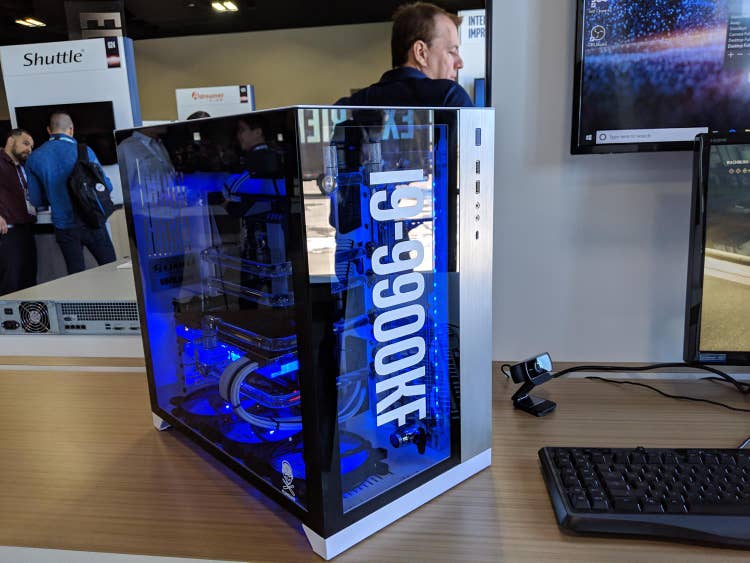Intel's F-Series CPUs Meant To Ease Shortage, Top Sales Exec Says

Intel executive Steve Long admitted that the company hasn't done a good job explaining the strategy behind the chipmaker's new line of F-series client processors, which sparked some confusion earlier this year due to pricing similarities with another line of processors that have an extra feature.
"I feel like we've done a terrible job communicating and explaining what these are," Long, Intel's top sales executive for the Client Computing Group, told CRN in an interview on Tuesday at the Intel Partner Connect conference in Denver.
[Related: AMD: 7nm Ryzen's CES Debut Just The Start Of New Fight Against Intel]
The Santa Clara, Calif.-based company introduced the F-series at CES in January with little fanfare, and media outlets quickly noticed that the "F" suffix indicated that the processors had their integrated graphics disabled. The processors are an expansion of the ninth-generation Intel Core family that was introduced last fall, headlined by the Core i9-9900KF.
The confusion appeared to center around the fact that the F-series processors have the same recommended customer pricing as processors that have nearly the same features, except with integrated graphics turned on — the i9-9900KF and the i9-9900K, for instance, both have a set price for $499, according to Intel's website.
Long said the idea for the F-series came about as one way to ease Intel's CPU shortage, which has now lasted several months and is expected to end in the second half of 2019. The idea was to increase the company’s overall supply of processors by taking units with integrated graphics that weren’t up to the company’s standards due to manufacturing issues and sell them with the integrated graphics disabled.
“As we were going through our supply conundrums, one of the alternatives that we looked at was ‘productizing’ SKUs that [...] would be ‘discrete-ready’ SKUs,” Long said, referring to the fact that computers with the F-series processors require a discrete GPU from Nvidia or AMD for graphical capabilities.
"If you're going to put this in a discrete solution, with a discrete graphics card, there's no reason why you shouldn't consider this part," he said.
The executive was careful to emphasize that outside of having the integrated graphics disabled, "there's absolutely nothing wrong with the part." Long added: "When you're in a manufacturing process, you have different parts [that] yield differently for different reasons, so you can use them for different segments.”
Long said the company 's strategy for selling the F-series processors is to create incentives for channel partners rather than consumers. Those incentives include points for Intel's partner rewards program and bundles.
"We're working to make sure that the partners know that we are committed, that we're dead serious. These parts are here. They're here to stay," Long said. "They're on a roadmap for a reason, and we're showing them that we're hungry to have them take the parts."
Randy Copeland, president of Velocity Micro, a Richmond, Va.-based systems builder, said the lack of integrated graphics won't necessarily matter to those buying systems with discrete GPUs.
[Related: Intel: End Of Core+ Brand Doesn’t Reflect Change In Optane Strategy]
"They've got silicon. The cores [are] workings fine. The GPU is defective, so they're disabling it and still selling it, and the market will bear the price," he said. "For most of what we do, we use discrete graphics anyway, so having that part is not necessarily important to me."
Long said he's been paying close attention to F-series sales every week and has noticed in uptick in the channel as distributors gain more confidence with the processors.
"We're looking at some of the regular financial programs that we have with distributors around working capital — how do we get them more confident?" he said.
Intel could have taken this strategy earlier on by spinning out new products like the F-series, Long said, but he added that doing so comes with its own challenges associated with how to properly market them.
"You just create layers of complexity that when you're in a perfect supply and demand environment, you might choose not to," he said. "When you're not and you're trying to get people parts, so we can keep selling them and businesses can keep growing — that's why we did it."